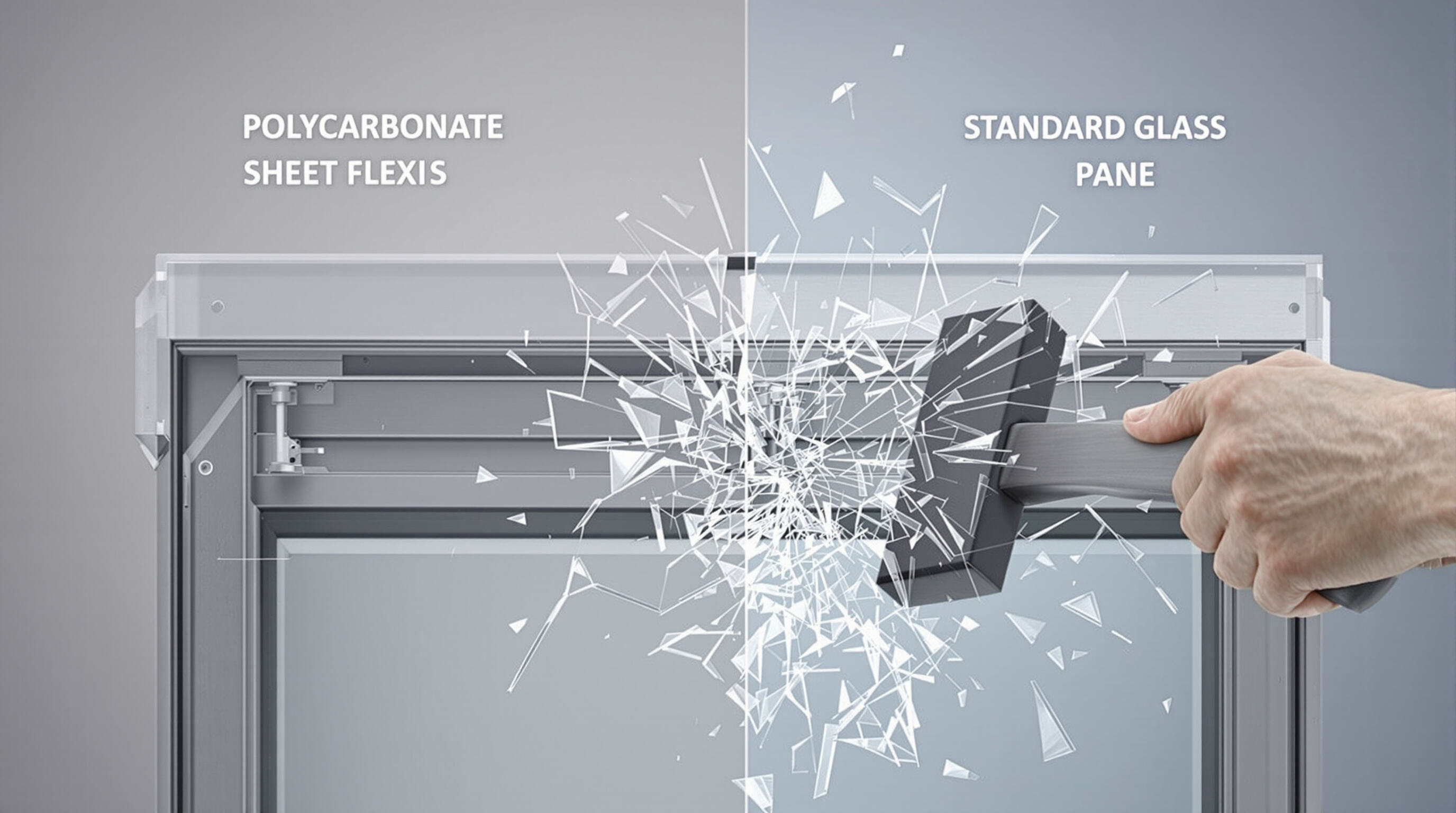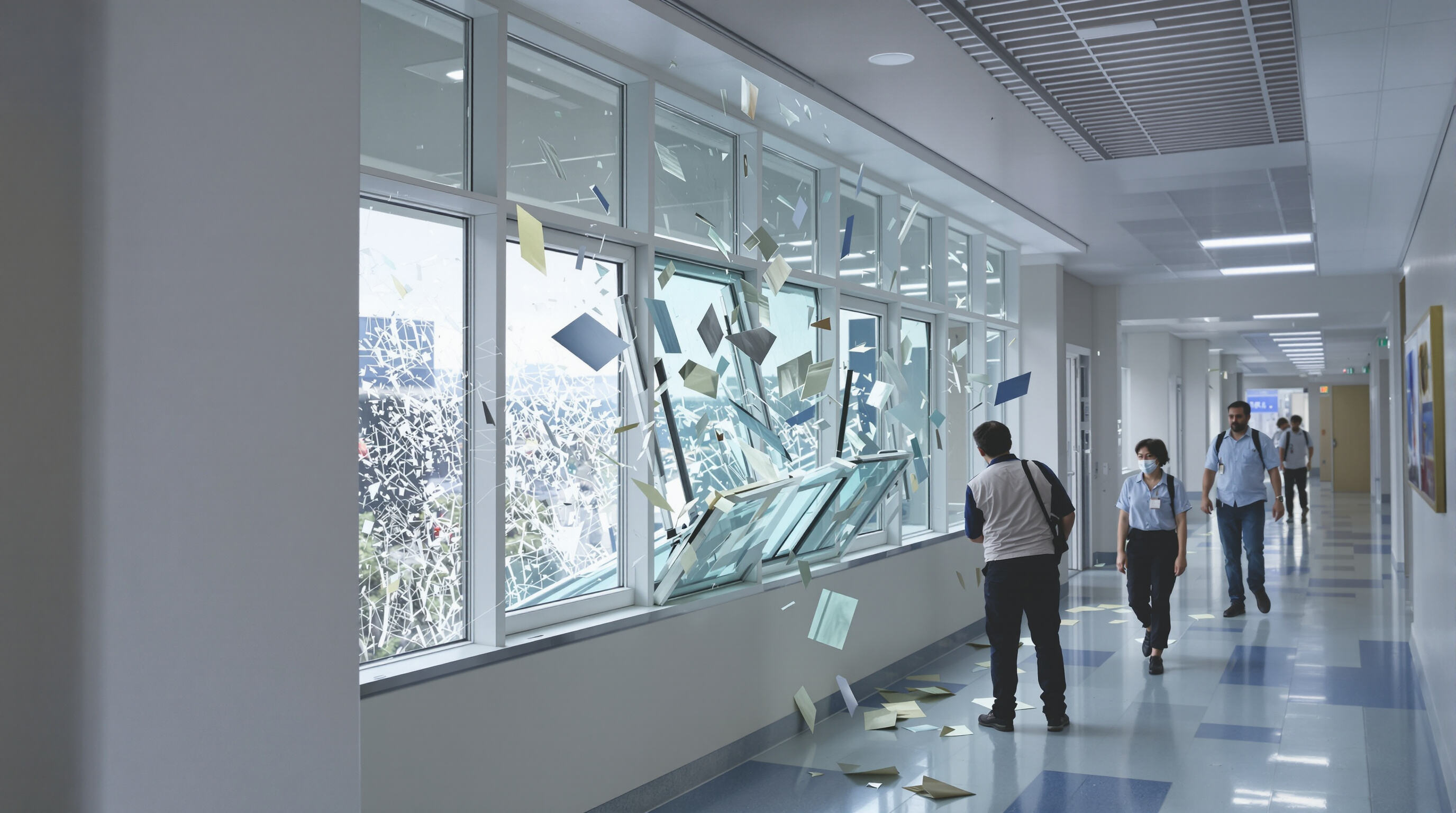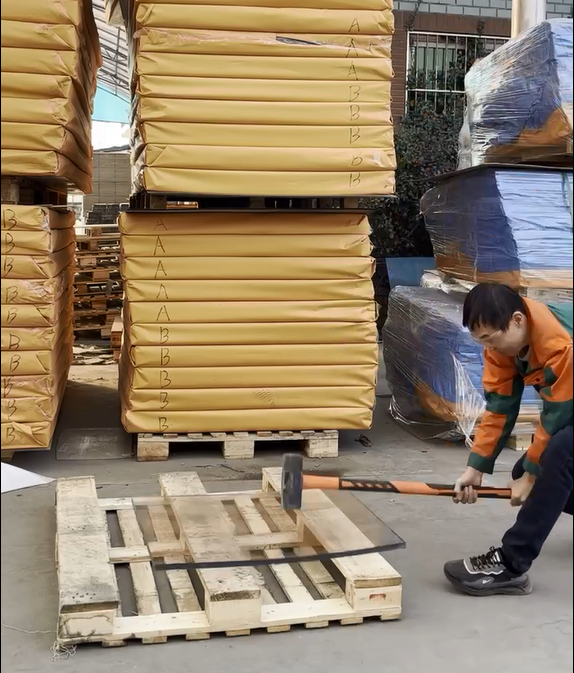Phenomenon: Why Polycarbonate Stands Out in Impact Resistance
Polycarbonate glazing demonstrates unparalleled impact resistance, absorbing forces 250 times stronger than standard glass without fracturing. This thermoplastic material maintains structural integrity when exposed to blunt trauma, hail, or debris—common challenges in extreme environments.
Principle: The Molecular Structure Behind Polycarbonate's Toughness
The material’s toughness stems from its amorphous molecular structure, which enables energy dissipation across polymer chains. Unlike rigid glass or brittle acrylic, polycarbonate’s molecular bonds flex under stress, redistributing impact energy instead of propagating cracks.
Case Study: Performance in Extreme Weather Conditions
During a 2023 hurricane simulation, polycarbonate glazing panels withstood wind-borne debris at 110 mph without perforation. Testing institutions confirm this performance meets ASTM E1996 standards for severe weather resilience, making it ideal for storm-prone regions.
Trend: Increasing Adoption in High-Risk Environments
Public infrastructure projects now prioritize polycarbonate glazing for bus shelters, sports arenas, and airports. Its shatterproof properties reduce liability risks and maintenance costs compared to traditional glass installations.
Strategy: Optimizing Polycarbonate Glazing for Maximum Impact Absorption
Engineers enhance impact resistance through multi-layer lamination and hybrid designs. For example:
- UV-resistant coatings prevent environmental degradation
- Panel thickness (3mm—12mm) balances security and light transmission
- Glass-clad layers improve scratch resistance while retaining flexibility
Impact Resistance of Polycarbonate Sheets Compared to Standard Glass

Regular annealed glass tends to break around 6,894 kPa or roughly 1,000 psi pressure points. Polycarbonate on the other hand can handle an impressive 1,378,951 kPa which equals about 200,000 psi making it approximately 200 times tougher than standard glass based on recent polymer research from 2024. What makes polycarbonate so durable is its unique property to bend slightly when struck, maybe around 10 degrees give or take, before snapping back into shape. This bending action actually soaks up the force of impacts instead of letting cracks form right away. Glass works differently though. When hit with similar amounts of force, regular glass just breaks apart completely without warning. That's why we see so many warnings about broken glass dangers in places where people gather frequently or regions prone to severe weather events.
Polycarbonate vs. Acrylic in Security Applications
While acrylic offers 10x greater impact resistance than glass, polycarbonate outperforms it in critical security scenarios:
- Blunt force tests: 25mm polycarbonate sheets withstand sledgehammer strikes that fracture 50mm acrylic panels
- Projectile resistance: Polycarbonate maintains integrity against 9mm rounds at 366 m/s (1,200 ft/s), while acrylic cracks at 30% lower velocities
- Flexural endurance: Polycarbonate tolerates 800% more deflection cycles before showing stress marks
These properties make polycarbonate the preferred choice for prison windows, bank teller barriers, and industrial machine guards.
Data Insight: Polycarbonate Withstands Impacts 200x Stronger Than Glass
Controlled ASTM D3763 testing reveals:
| Material | Impact Resistance (J/m) | Failure Mode |
|---|---|---|
| 6mm Annealed Glass | 1.2 | Shatters |
| 6mm Acrylic | 15 | Cracks radially |
| 6mm Polycarbonate | 250 | Deforms plastically |
This 200:1 performance gap explains why 92% of hurricane-prone regions now mandate polycarbonate glazing in coastal construction codes (2024 Federal Building Standards).
Resistance to UV Degradation and Environmental Wear
Polycarbonate glazing holds up really well even when exposed to tough weather conditions thanks to those special UV inhibitors inside that stop almost all (like 99%) of harmful sunlight from getting through. Regular old glass tends to get cloudy after sitting out in the sun for too long, but polycarbonate keeps letting in about 92% of light even after being outside for a full decade according to that recent durability report from 2023. The surface also has this water-repelling property which means less dirt sticks to it and it doesn't corrode as easily from chemicals. This makes polycarbonate especially good for places near the ocean where salty air can really eat away at materials over time.
Reducing Injury Risk With Shatter-Resistant Polycarbonate Glazing

When impacted, polycarbonate glazing flexes rather than shatters—a critical safety advantage verified by independent testing. With 250x greater fracture toughness than glass, it eliminates dangerous shards, reducing laceration risks in crowded spaces. Hospitals using polycarbonate report 63% fewer impact-related injuries compared to glass installations (Ponemon 2023).
Case Study: Schools and Hospitals Transitioning From Glass to Polycarbonate
A major urban school district replaced 15,000 sq.ft of gymnasium glass with 12mm polycarbonate glazing, achieving:
| Metric | Glass (Before) | Polycarbonate (After) |
|---|---|---|
| Annual breakage rate | 47 incidents | 0 incidents |
| Maintenance costs | $18,000/year | $1,200/year |
This transition eliminated glass-related evacuation events and cut glazing lifecycle costs by 89% over five years.
Security and Anti-Vandalism Applications of Polycarbonate
Anti-vandalism applications of polycarbonate in urban settings
Cities are turning to polycarbonate glazing for their security needs because it just doesn't give way when someone tries to break in. Local governments have seen some pretty impressive results too – around 42 percent drop in vandalism at bus stops and train stations where they switched to polycarbonate instead of regular glass according to the Urban Safety Review last year. What makes this material so tough? Well, it bends rather than breaks under impact from things like baseball bats or rocks. And those fancy coatings on top? They make it really hard for vandals to leave permanent marks with spray paint or acid attacks. This combination of strength and practicality is why more cities keep making the switch despite higher upfront costs.
Use of polycarbonate in bulletproof windows and barriers
More security professionals are turning to polycarbonate when they need materials that can resist bullets, mainly because it absorbs impact energy so much better than regular glass does – roughly 200 times better actually. When layered properly, these polycarbonate panels have proven effective against common handgun rounds like 9mm and even .44 Magnums during official testing procedures. The lighter weight makes all the difference for installations at places like airports where security windows need to be both strong and not weigh down structures, as well as banks where tellers require protection without feeling trapped behind heavy glass barriers.
Can provide ballistic protection: Engineering multi-layer polycarbonate systems
Advanced laminating techniques create composite security barriers by bonding polycarbonate sheets with glass layers. This hybrid approach achieves UL752 Level 8 ballistic ratings while maintaining 92% light transmission. The U.S. Federal Protective Service mandates such systems in all new federal buildings, citing their 35-year service life with minimal maintenance.
Controversy Analysis: Cost vs. security benefits in public installations
While polycarbonate security glazing costs 2—3× more initially than laminated glass, lifecycle analyses show 62% lower total ownership costs over 15 years. Critics argue this pricing disparity limits adoption in budget-constrained municipalities, though insurance premium reductions of 18—22% (Risk Management Journal, 2024) increasingly offset upfront investments.
How Thickness and Composition Affect Polycarbonate Performance
How Thickness Affects Impact Resistance of Polycarbonate
The thickness of polycarbonate glazing plays a big role in how well it can handle impact energy. Three millimeter sheets will hold up against something like a baseball thrown at around 65 miles per hour, but when we look at 10mm multilayer panels, they can actually soak up over 900 joules of force. That kind of strength is similar to what happens during a strong sledgehammer hit. For those really thick panels between 12 and 25mm, they meet the UL 752 Level 1 standards for ballistics, meaning they can stop bullets from a standard 9mm handgun. Some recent field testing in 2023 showed just how tough these materials are. Six millimeter polycarbonate windows survived two inch hail stones hitting them while wind speeds reached 110 mph, and not one window failed. These results beat traditional half inch laminated glass by about 83%, which tells us why so many security installations are switching to this material nowadays.
| Thickness | Impact Resistance | Common Applications |
|---|---|---|
| 3—5mm | 40—120 joules | Greenhouses, sound barriers |
| 6—10mm | 300—900 joules | Stadium enclosures, bus stops |
| 12—25mm | 1,200+ joules | Prisons, armored vehicles |
Glass Clad Polycarbonate Composition for Hybrid Performance
When manufacturers combine 3mm tempered glass on the outside with a 6mm polycarbonate core inside, they create glazing that has both rock hard surface protection (rated at 9H on the Mohs scale) and good shock absorption properties. The result? About two thirds fewer visible scratches compared to regular polycarbonate alone, yet still lets through nearly all the light (around 92%). A recent field test back in 2022 showed these glass coated panels stood up to what would normally take 15 years of sand blasting erosion in just accelerated lab conditions, and still looked clear as day. That makes them great for places where things get pretty rough on materials. To keep everything stuck together properly, especially when temps drop below freezing point (-40 degrees Fahrenheit or Celsius), most companies use special silicone between the layers. This stops the different materials from peeling apart even in extreme cold conditions.
FAQ
What makes polycarbonate glazing impact resistant?
Polycarbonate's impact resistance comes from its amorphous molecular structure, allowing it to dissipate energy across polymer chains and flex under stress.
How does polycarbonate perform in severe weather conditions?
Polycarbonate panels withstand wind-borne debris without perforation, meeting ASTM E1996 standards for severe weather resilience, making them ideal for storm-prone areas.
Why are polycarbonate sheets preferred in security applications?
Polycarbonate resists blunt force and projectile impacts better than acrylic and glass, making it ideal for security applications like prison windows and bank teller barriers.
How does polycarbonate compare to glass in terms of impact resistance?
Polycarbonate can handle pressures much higher than glass, making it 200 times tougher and it flexes slightly under impact, absorbing force without shattering.
Does polycarbonate glazing resist environmental wear?
Yes, it has UV inhibitors that prevent degradation from sunlight, ensuring long-lasting clarity and strength even in harsh environments.
Table of Contents
- Impact Resistance of Polycarbonate Sheets Compared to Standard Glass
- Polycarbonate vs. Acrylic in Security Applications
- Data Insight: Polycarbonate Withstands Impacts 200x Stronger Than Glass
- Resistance to UV Degradation and Environmental Wear
- Reducing Injury Risk With Shatter-Resistant Polycarbonate Glazing
- Case Study: Schools and Hospitals Transitioning From Glass to Polycarbonate
- Security and Anti-Vandalism Applications of Polycarbonate
- How Thickness and Composition Affect Polycarbonate Performance
-
FAQ
- What makes polycarbonate glazing impact resistant?
- How does polycarbonate perform in severe weather conditions?
- Why are polycarbonate sheets preferred in security applications?
- How does polycarbonate compare to glass in terms of impact resistance?
- Does polycarbonate glazing resist environmental wear?

